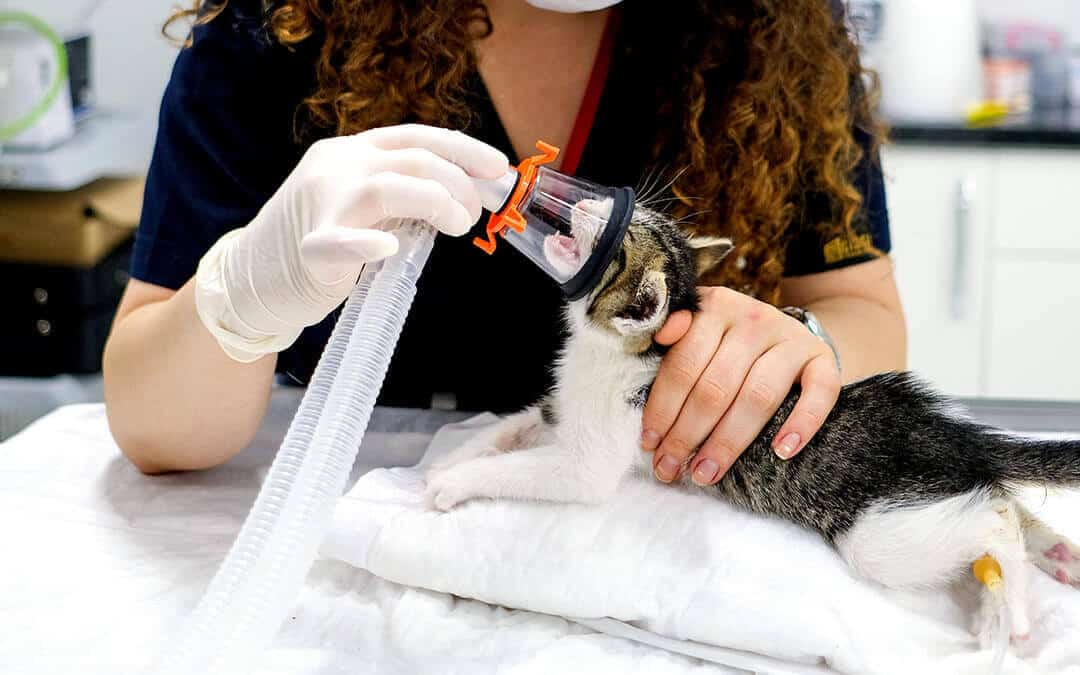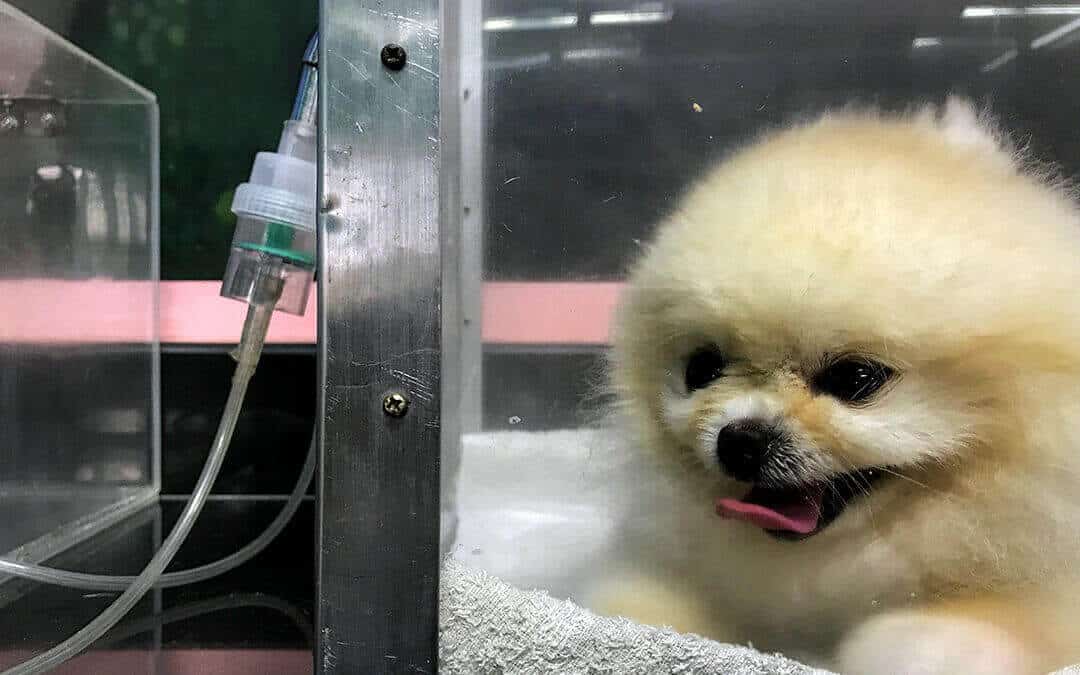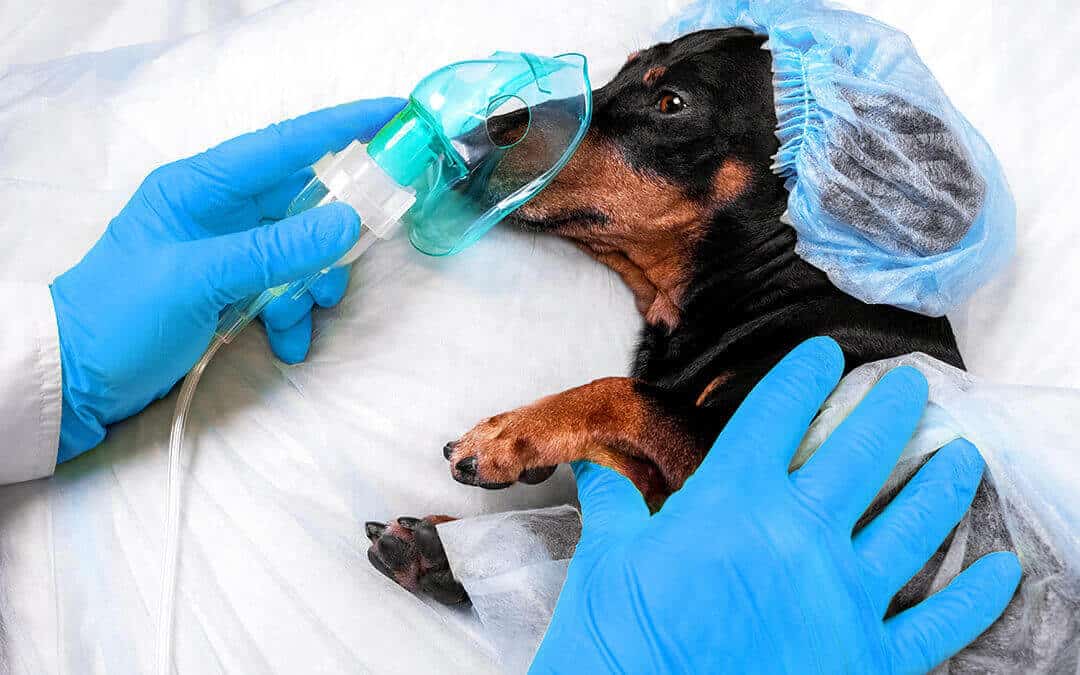If you’re in the medical field, you’re probably familiar with oxygen therapy. Typically used for when people can’t get enough oxygen on their own (as with COPD or pneumonia), oxygen therapy increases the amount of oxygen that your lungs receive and deliver to your blood. But did you know that oxygen therapy is also used in veterinary medicine? That’s right — oxygen therapy can be used in a vet’s office to supplement the air that an animal breathes, particularly with dogs, cats, and other pets. This life-saving therapy allows oxygen to diffuse into tissues at distances three to four times further than usual to promote healing, often making a difference between life and death.
Oxygen Therapy in Animals

Oxygen therapy is often used when a pet is brought in and is having breathing difficulties. Using compressed oxygen stored in a portable tank, an increased amount of oxygen is delivered, allowing the animal to be stabilized for tests, surgery, or healing.
While there are several different ways of providing oxygen therapy to animals, they all have one thing in common for vets: Don’t stress out the patient. When stressed, an animal that is already short of breath could be pushed into crisis mode. With this in mind, options for stress-free oxygen delivery include:
- Flow by oxygen: This allows oxygen to flow from a delivery pipe into the airspace close to the animal’s nose. This is a top choice for patients who are extremely stressed.
- Nasal catheter: Here, a fine tube is passed into the animal’s nose, and oxygen is delivered directly into the respiratory system. This is often the most effective way to deliver oxygen.
- Oxygen mask: A close-fitting mask is held over the animal’s face or muzzle.
- Oxygen chamber: An oxygen chamber can be made by fitting the animal with a cone, then sealing the diameter. A tube is then fed into the base of the cone, creating a higher oxygen concentration near the face.
- Oxygen tent: This is a sealed chamber in which the whole animal is in an oxygen-rich atmosphere.
There are more oxygen delivery options (some with slightly higher stress levels) available to vets, depending on the needs of the pet. But no matter which way it’s delivered, oxygen therapy can be beneficial to the animal when administered correctly.
Benefits of Oxygen Therapy for Animals

As stated, oxygen therapy can be lifesaving for pets and is an essential treatment in many situations. But in the long term, oxygen toxicity can occur if an animal is exposed to high concentrations of oxygen for several days. This is why most animals who receive oxygen therapy only do so for a few hours, by which time medications have started to work and the main issue has been addressed. As a short-term treatment, oxygen therapy is beneficial to pets in the following ways:
- To stabilize them, so that a workup or surgery can be done. These processes help to identify and treat the underlying cause of the animal’s respiratory distress, so the animal can be treated properly.
- Faster healing. Oxygen therapy helps stimulate new blood cells and prompts the bloodstream to utilize more oxygen.
- Calming effects. Most animals feel calm and relaxed while undergoing oxygen therapy. Some even take naps throughout their treatment.
- Reduced swelling for postoperative, crush injuries, snake bite, burns, etc.
- Post-surgery recovery, especially for pets who have had serious trauma or large wounds.
- Treatment for smoke inhalation and carbon monoxide toxicity after exposure to these elements.
For many people, their pets are everything. They live their life side by side with them and treat them like a family member. So, being able to provide a sick pet with essential oxygen therapy can be helpful — and much appreciated — in the long run. Not only does it help the pet stabilize faster while decisions are made, but it can help them recover much more quickly. For a vet, having access to this type of oxygen therapy can save a pet’s life. And while oxygen therapy is a relatively new form of care for animal patients, it is an important therapy for vets to consider. At CalOx, we specialize in the medical-grade oxygen that helps to save these lives. Our medical oxygen tanks contain 100% concentrated oxygen gas and are USP-certified for human (and pet!) use. We’re also FDA-certified for medical oxygen, making medical oxygen delivery, storage, and service simple for you. Contact CalOx today if your veterinary clinic needs medical-grade oxygen for a free quote!

Resources:
https://wagwalking.com/treatment/oxygen-therapy/
https://oxygen4pets.com/how-it-works/
https://todaysveterinarypractice.com/providing-supplemental-oxygen-to-patients/
